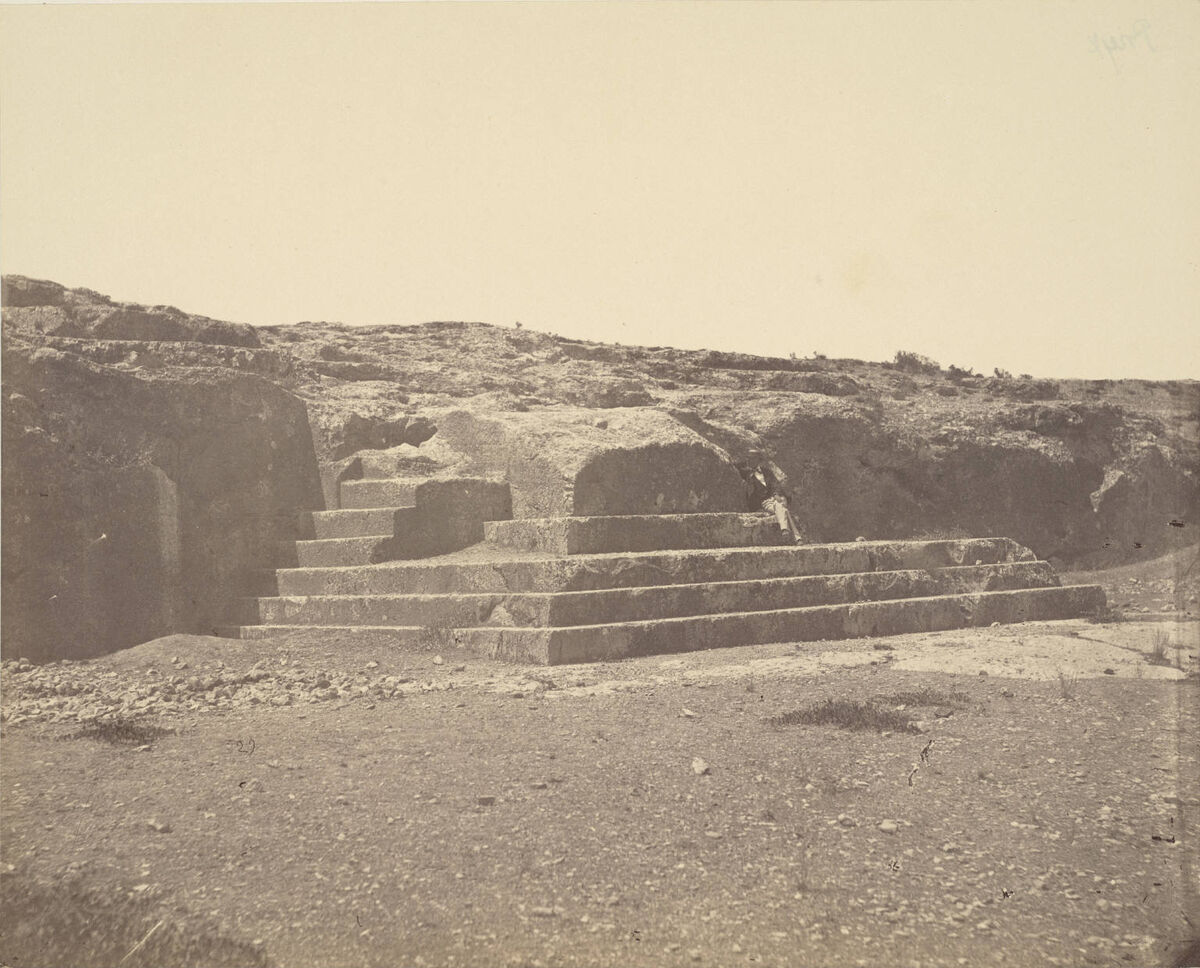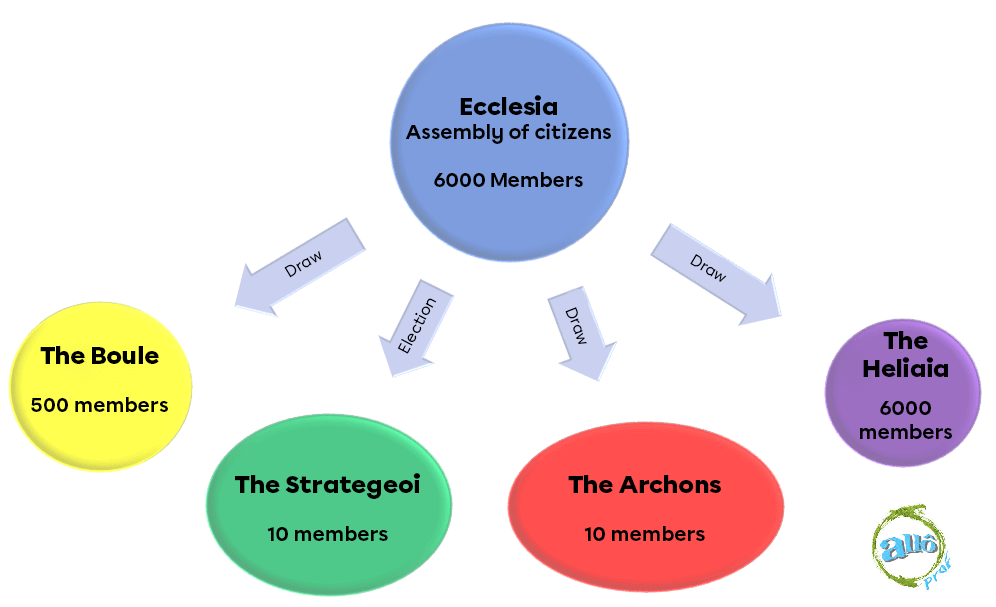The Athenians developed a highly complex system to manage their city. Unlike the monarchy, where only the king held power, direct democracy involved the citizens in the decision-making process. For this reason, a number of institutions were created, enabling the citizens of Athens to take control of their city. Here are the main institutions in Athens in the 5th century B.C.
The Ecclesia is the institution that best represents direct democracy in Athens. It is an assembly of citizens who take all decisions concerning the city. The Ecclesia meets 3 or 4 times a month on the Pnyx hill. At these meetings, all citizens present can speak and vote when decisions are taken.
All citizens over the age of 20 can take part in the Ecclesia meetings. Of the 40,000 citizens, no more than 6,000 usually attend the meetings on the Pnyx.

The Pnyx, the site where the citizens gathered for the assemblies of the Ecclesia. Any citizen wishing to speak had to step onto the stone platform.
The Boule is the institution that administers the city. The members of the Boule deal with the day-to-day problems of the city. They are also responsible for organising and preparing the meetings of the Ecclesia. They draft bills and present them to the Ecclesia for a vote.
There are 500 members of the Boule, who are randomly selected from the citizens over the age of 30. They are chosen for a period of 1 year.
The Heliaia is the court of the people. This institution administers justice and applies the laws. The judges listen to the accused and, using pebbles or voting tokens, condemn or acquit them.
The Heliaia is made up of 6,000 citizens over the age of 30, chosen at random for 1 year. During this period, they may be selected daily to judge a case.
The strategoi represented the military power of Athens. They presented projects directly to the people's assembly (the Ecclesia) and had them voted on. They also demanded a special tax for the defence of Athens and ran the day-to-day military life of the city-state.
This body was made up of 10 military leaders elected by the Ecclesia once a year. Pericles is undoubtedly the best-known strategoi of the 5th century B.C.
Pericles was born in 494 B.C and became one of the greatest leaders in Greek history, so much so that the 5th century B.C is known as the century of Pericles. He was less than 30 years old when he came to power in the city of Athens. He became a strategoi, the commander of a military unit that controlled both the army and the political scene. He contributed to the development of Athens by promoting the idea of democracy. Pericles was an outstanding military man. He orchestrated the development of a naval and colonial power that made Athens the greatest city of its time. He fought against the Persians and created an Athenian empire that he embellished with monuments, statues and temples all over Athens.
The Archons were responsible for overseeing trials and presiding over religious ceremonies. Over time, the Archons lost much of their influence to other institutions. Being an Archon is prestigious, but in practice they have little power.
There are 10 Archons in all, randomly selected from among the wealthiest citizens. They are appointed for a period of one year.
The Athenians were the first to experiment with democracy. It was a fantastic system which, unlike other systems of the time, allowed a large number of people to participate in the exercise of power. The biggest criticism of the Athenian system is that only citizens took part in the debates and votes of the assembly. In fact, only 10% of the population held power. Metics, slaves and all women were therefore subject to the decisions made by this privileged group, the citizens.

